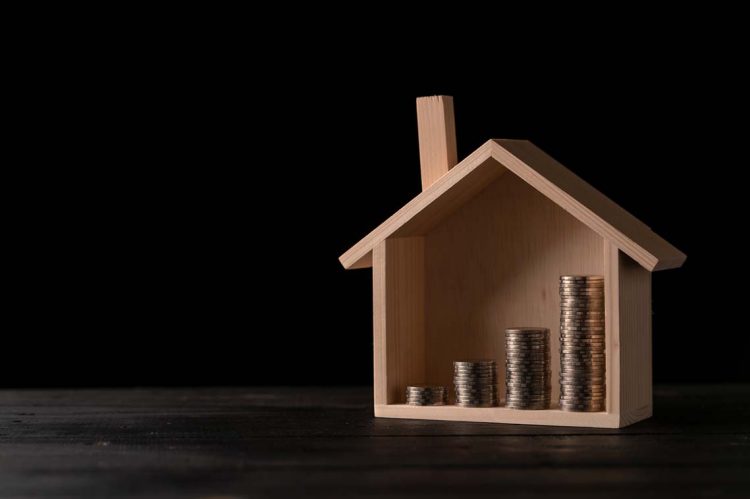Editor’s Note: RISMedia’s Year-End Outlook series provides an in-depth analysis of the housing market’s leading indicators for economic health, and showcases expert insights on what’s to come in 2022.
Depending on whom you ask, the past year of home price gains may have been a boon or a bust. Home prices rose by nearly 20% over the past year under a perfect storm of a widening supply and demand gap in addition to pandemic-induced influences.
On the one hand, sellers have benefited from heated competition that drove property value through the roof during the second half of 2021. On the other, surging price tags have continued to exacerbate long standing affordability issues, with more people being priced out of the market.
Housing affordability dipped in 2021 as tight inventory and high demand contributed to record-setting price surges, according to Gay Cororaton, senior economist and director of Housing and Commercial Research at the National Association of REALTORS® (NAR).
“Even before the pandemic, we had a tight supply because of lack of labor, and then when the pandemic hit, people didn’t seem too interested in listing their homes,” she says.
When the COVID-19 pandemic first appeared in March 2020, many people anticipated the housing market’s demise, says Matthew Gardner, chief economist at Seattle-based Windermere Real Estate.
“What we found was that demand not only came back, but it came back in an even more robust manner than had been seen before the pandemic hit,” Gardner says. “That was boosted even more by the work-from-home paradigm.”
The success and uncanny market behavior resulted from a series of factors, including razor-thin supply and mortgage rates, which began declining in January 2020 and ultimately landed at historically low levels—2.68%—by December of that year.
With a month left in 2021, real estate experts tell RISMedia that they expect home prices to continue climbing in 2022, albeit at a slower pace than 2021.
The days of double-digit price appreciation are gone, according to Gardner who suggests price gains to hit just above 7% in 2022.
“That is certainly not a number to be sniffed at,” Gardner says, adding that the growth will still be above the long-term average but will “come off of the sugar high that we saw this year.”
“We are going to see headwinds relative to price growth, but it’s going to be predominantly a function of two things: wages not keeping up affordability and mortgage rates rising,” Gardner warns.
In previous conversations with RISMedia, Gardner said he expected 30-year fixed mortgage rates to approach but not break 4% next year. While he maintains those predictions, he notes that it will still be up by an entire percentage point from the lows in 2021, which will squeeze more buyers out of the market.
Another factor likely to add to the cooldown in price gains is the addition of new supply. Cororaton suggests that new construction is poised to improve next year.
Despite expected improvements in new construction, Cororaton says there is still a long way to go before the industry makes a substantial dent in the market’s 5.8 million housing unit needs.
“We’re just estimating an increase of 100,000 housing starts right now, so supply will continue to remain tight as it has been since 2012,” she says.
Brokers and industry leaders say they are keeping a close eye on how many homes come on the market next year, especially as seller confidence picks up under continued progress in vaccinations.
“There are likely many that sat on the sidelines in 2021 because of the pandemic,” says Sherry Chris, president and CEO of Realogy Expansion Brands.
Chris suggests that the increase in supply and rising mortgage rates could influence the number of potential buyers. “Should this occur, we might see a decrease in multiple-bid offers, and prices might stabilize,” says Chris.
Another factor that could inject additional homes into the market is increasing foreclosure activity, says Ashley Bowers, president of HomeSmart International.
“If we start to see more foreclosures, I think it will slow down the price increase and probably shake up affordability too for people who want to do more of the fixer-uppers,” Bowers says.
The market hasn’t had to wait long to see foreclosure activity pick up since the moratorium lifted in July 2021.
While experts and brokers have been unconvinced that the market will see a deluge of foreclosed homes on the market, Bowers notes that a sizable increase could slow price gains a bit further.
“We’ve seen a little bit of an increase already, but I think it depends quite honestly on the administration and what happens with decisions that they are making as it relates to moratoriums and things like that,” she says.
Christina Pappas, VP of the Keyes Company, thinks brokers and agents looking to meet the coming market conditions head-on should prioritize their client-facing messaging regarding home-buying and affordability challenges.
“The misconception of the expensiveness of the down payment is one of those topics where we think about how we help our agents become valuable to the consumers,” Pappas says.
She adds that the value will come from agents showing deep knowledge and understanding of the programs offered in their neighborhood and what is affordable.
“The other catch when you look at affordability is that many people look at prices, and those are great headlines, but what matters is my monthly payment, and that’s the story that we need to talk about,” Pappas continues.
Despite the current trajectory of mortgage rates, they are still relatively low when compared with pre-pandemic levels. Pappas indicates that millennials and first-time homebuyers will still try to take advantage of the lower rates next year.
 Jordan Grice is RISMedia’s associate online editor. Email him your real estate news ideas to jgrice@rismedia.com.
Jordan Grice is RISMedia’s associate online editor. Email him your real estate news ideas to jgrice@rismedia.com.












